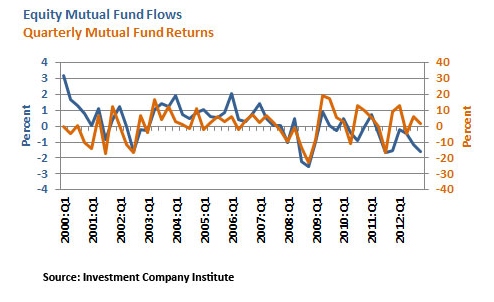Explanation For Recent Big Drop In Mutual Fund Values
Post on: 5 Июль, 2015 No Comment

Many people will log into their brokerage accounts in December and be surprised by some curious losses. Not to worry, most likely this is due to your mutual distributing either capital gains and/or dividends. Mutual funds and ETFs are baskets of stocks, so just like with stocks, they can create capital gains when they sell holdings for a profit. By law, mutual fund companies must distribute 90 percent of realized capital gains and dividends each year, and tis the season for passing these out.
If you invest with Vanguard, they have a nicely organized list of estimated year-end distributions for Vanguard funds and ETFs, with capital gains broken down into short-term and long-term. Most index funds have very low turnover, so for the most part they have very little capital gains to distribute. Many index funds and ETFs are however distributing dividends.
While your funds net asset value (NAV) will drop after a distribution, youll get an equivalent amount of cash in your account. Lets say your NAV is $10 and they make a $3 distribution youll end up with $7 in NAV and $3 in cash. If you have it set to automatically reinvest, then that cash will go back and buy more shares. If you hold them in a taxable account, this means youll have to pay the appropriate taxes on these gains on your upcoming tax returns. If they are in a sheltered account like an IRA/401k, then you dont have to worry about taxes.
For example, the Vanguard Wellesley Income Fund Investor Shares (VWINX) went down $0.53 a share (–2.15%) on Monday 12/17/2012, and the Vanguard Health Care Fund Investor Shares (VGHCX) went down –$4.01 (-2.70%). But the overall market went up? We see though, that VGHCX had the following distributions.
$2.661 per share in dividends
$0.173 per share in short-term capital gains
$1.964 per share in long-term capital gains
$4.798 in total distributions
So the vast majority of the changes were in reaction to these distributions ($0.53 vs $0.54, $4.01 vs $4.80). The rest is the actual market value change of the underlying investments.
Find Your Specific Funds Distributions
The first place to look for past and future distributions is the website of your fund company, like I did above with Vanguard. If you cant find it there, I use the Morningstar quote system a lot. Plug in your ticker symbol into the quote box and scroll down for a specific section called Dividend and Capital Gains Distributions which will provide you a past distribution history.














